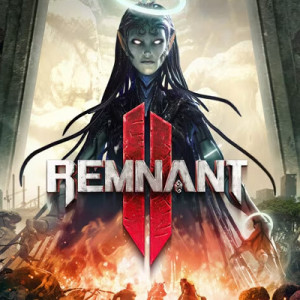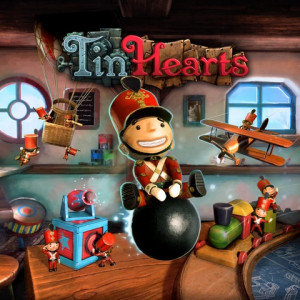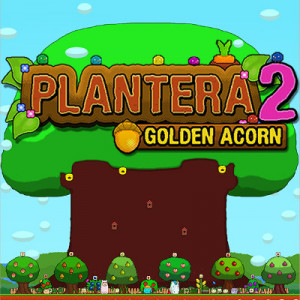Alice: Madness Returns Review
Games Xtreme is somewhat late down the Rabbit Hole, following Alice on her latest maddening adventure.
The Madness has returned
11 years later, American McGee's Alice running on the Quake 3 engine has been bundled in with the new game, Madness Returns, as long as you buy the original of course and make sure to use the code to activate the previous game. It's an interesting way to ensure people do get a non pre-owned copy of the game. Alice was a revolutionary game at the time, since it used the Quake 3 engine (primarily for first person shooters) to create a darkly-trippy platformer.
Without spoiling too much of the central plotline, Madness Returns takes place when Alice is a teenager. Having dealt with the events of the first game, she's now under the care of a psychiatrist... suffice it to say... her mind is as cracked as ever. Things in Wonderland have become worse and Alice has to deal with the increased dementia. The darkly gothic overtones are back and honestly, this is far more in keeping with Lewis Carrols literary masterpiece than the Tim Burton film.
Gameplay
Part unforgiving brutal hack and slash, and part forgiving platformer, Alice: Madness Returns treads that fine line between both quite well. The combat is definitely something that requires a lot of concentration and attention, with counters, blocks, dodges and multiple weapons required to deal with many of the games bad guys. It doesn't do to just button mash in Madness Returns, you have to make sure you know what you're fighting and what the best weapon needs to be at any time. For example, you'll encounter some very pesky teapots that can fire ranged attacks, are armoured against Alice's trusty Vorpal blade (right from the story about the Jabberwock) and require a little bit of ingenuity to dispatch.
It's this very nifty design to the combat that makes each encounter a memorable, if a little frustrating one. The game rewards persistence and eventually you find that you can get to grips with the various skills required to engage in combat and defeat your foes. Alice is a nimble minx in that regard, our precocious teenage heroine having access to the Vorpal knife (blade) and a variety of other weapons, exploding bunny rabbit bombs that can also be used to solve many of the game's weight related puzzles and her pepper-grinder, which is basically a peppery-machine gun.
The lock-on system works really well, it's nice and fluid and you can snap from target to target quickly, dodging is also implemented very well as is blocking and countering. This is a good thing because as mentioned previously, the combat is brutal and satisfying against a menagerie of twisted creations from Alice's own fractured mind. The only thing that could have done with a little tweaking was weapon swapping speeds, they seemed a little too slow for such a fast paced combat system. This really shows when you have more than one type of ranged weapon and you need to use the D-pad to swap. I have to mention Alice's dodge though, it has a glorious slow-motion and after-effect that makes it one of the prettiest dodge moves in a game to date.
Madness Returns treats platforming a little more generously, with a checkpoint system that doesn't punish failure as much as the combat does. It will usually roll you back a misjudged leap or a failed segment, rather than starting you right at the beginning of an area or puzzle. Alice can double and triple jump, as well as float in a little airy manner. That's a good way to describe the platforming too, since Alice spends most of her time in the air floating effortlessly from one place to the next in these sections. There's no ledge grab though, so make sure you get that jump-timing down.
 Alice can also shrink at will, this is useful for exploration and getting past certain size related puzzles. It also allows her to see hidden platforms and clues in the environment, her mobility is limited in her shrunken form though so you can't jump around or do anything else. This form really allows her to get extra teeth, teeth being the currency of Wonderland that she can use to upgrade her many weapons and so on.
Alice can also shrink at will, this is useful for exploration and getting past certain size related puzzles. It also allows her to see hidden platforms and clues in the environment, her mobility is limited in her shrunken form though so you can't jump around or do anything else. This form really allows her to get extra teeth, teeth being the currency of Wonderland that she can use to upgrade her many weapons and so on.
You can also find health-replenishing roses and a few other hidden secrets this way.
The game seems to run to about fifteen hours of play, but lingers in a lot of the areas a little too long. I found myself wanting to move on before the game would let me, since I felt I'd seen a lot of what the previous area had to offer. Yet with such an engaging platformer and combat system, it wasn't too much of a problem. Thankfully the rhythm mini-games are entirely optional and that's a blessing, sort of like being able to turn off the QTE's in Witcher 2.
There are also no control issues to speak of, especially when in combat next to a narrow ledge, the game prevents you tumbling to your doom thankfully.
Graphics
The Unreal engine suffers a few load times here and there, as well as a bit of typical Unreal pop-in. The rest of the game proceeds without a hitch and the framerate keeps solid even if things get hectic. The design of the game is utterly fantastic, extremely trippy and the different domains of Wonderland in Alice's mind are produced with a great attention to detail. The game uses modern lighting techniques and all the tricks from the graphical grab-bag that you might expect. What stands out though is the aesthetic appeal of the game, not the graphics themselves, but the way that Wonderland is designed to resemble Alice's fractured mind full of impossible locations and beautifully created set-pieces. From industrialised sooty London to the impossibly crazy design of the Caterpillars realm.
The animations for Madness Returns are solid enough. Alice is fluid in combat and her walking, running, gliding and shrinking animations are perfectly executed. The girl's hair flows about her like a river at times, and that's probably more to do with physics than anything, but it really works well. The bad guys are all equally well animated, especially the ranged damage teapots with their gleaming Sauron-like central eye.
Physics
There's a nice feel to the physicality of the game, the combat has a weight to it and the blows connect well. You can be knocked prone by certain heavier attacks and Alice has a few twists of her own later on when you get further down the road in Madness Returns. It basically does what it says on the tin, providing a decent level of physics to the game and not swamping it in crazy physics based puzzles and locations.
AI
The AI is ruthlessly effective in combat; it will give you a serious run for your money as well as punish mistakes brutally. You need to be aware of specific attack patterns and typical run of the mill attacks just as much as some of the heavy hitting moves. Minor enemies can swarm you and leave you open for punishing moves from some of the major bad guys.
Sound
Sound feeds well into the overall experience, along with certain visual clues that enemies are about to attack, there are audio clues as well. Listen out for the teapots tell-tale whistle as it's about to fire a devastating ranged attack for example. The rest of the audio provides a good layer of atmosphere to a game that's brimming with visual appeal.
Music
A genuinely creepy score matches the on-screen visuals perfectly.
Dialogue
The script is a little clichéd in places but has a lot going for it, as per usual the apathetic and almost bored nature of the Cheshire Cat shines through his dialogue perfectly.
The Cheshire Cat wins hands down but the rest of the voice actors do a decent job, there wasn't anything in the voice work that could be considering mind-blowing.
Multiplayer
None, and rightly so said Alice!
The Last Teaparty
With the brutal combat, generous platforming and great visual appeal, Alice: Madness Returns shines forth as a great example of why American McGee is a superb game designer and a man with a twisted vision that's almost the equal Lewis Carroll. If you want a twisted gothic platformer packed with madness, aesthetic and gothic overtones, you can't go far wrong with this delve into Alice's broken psyche. With the slightly improved version of the first game on offer with new copies of Madness Returns, you can't really go far wrong.








